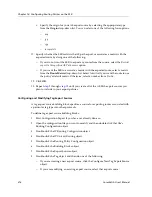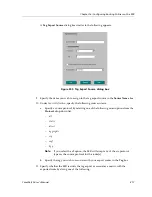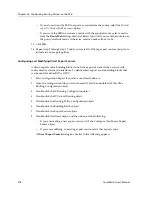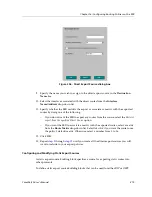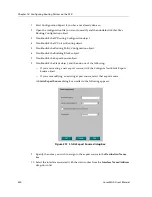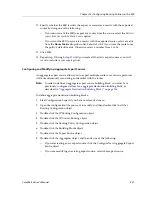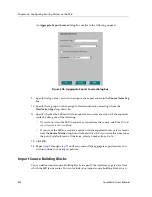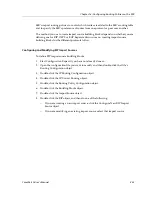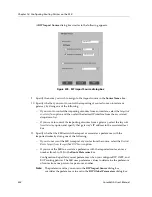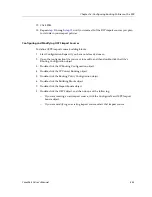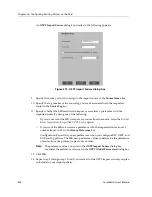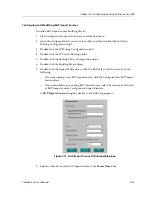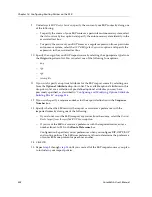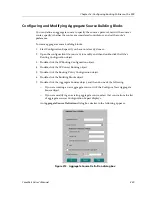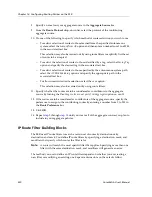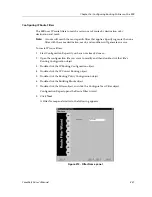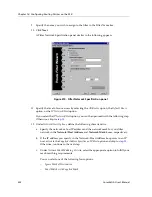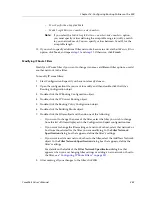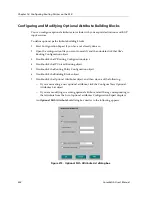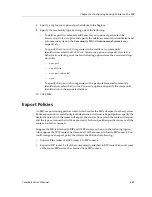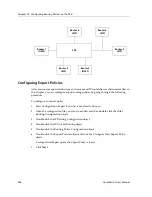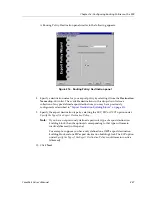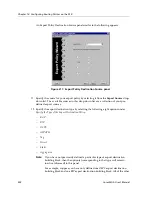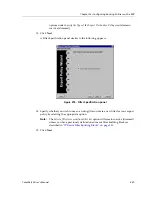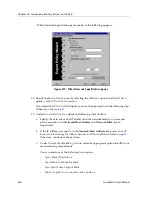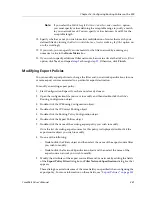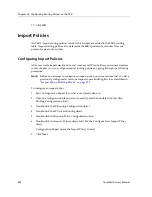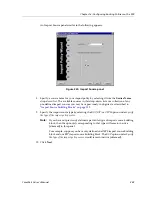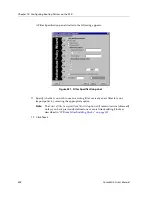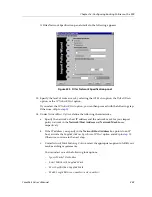
Chapter 16: Configuring Routing Policies on the SSR
330
CoreWatch User’s Manual
8.
Specify a name four your aggregate source in the
Aggregate Source
box.
9.
From the
Route Protocol
drop-down list, select the protocol of the contributing
aggregate source.
10. Do one of the following to specify which method of route restriction you wish to use:
–
To restrict selection of routes to those learned from the specified autonomous
system, select the
Learned from AS
option and then enter a number from 1 to 65534
in the associated text box.
This selection may also be carried out by using route filters to explicitly list the set
of routes to be accepted.
–
To restrict the selection of routes to those identified by a tag, select the
Having Tag
option and specify the desired tag in the associated text box.
–
To restrict selection of routes to those specified by the autonomous-system path,
select the
AS Path Matching
option and specify the appropriate path in the
associated text box.
–
To allow unrestricted route selection, select the
none
option.
This selection may also be carried out by using route filters.
11. Specify whether the routes are to be considered as contributors to the aggregate
source by turning the
Resulting routes are not part of this aggregate
option on or off.
12. If the routes are to be considered as contributors of the aggregate source, specify the
preference to assign to the contributing routes by entering a number from 0 to 255 in
the
Route Preference
box.
13. Click
OK
.
14. Repeat
step 8
through
step 13
until you create all of the aggregate sources you plan to
include in your aggregate policies.
IP Route Filter Building Blocks
The SSR uses IP route filters to match a certain set of routes by destination or by
destination and mask. You define IP route filters by specifying a destination, mask, and
modifiers that specify which routes the filter is for.
Note:
A route will match the most specific filter that applies. Specifying more than one
filter with the same destination, mask, and modifiers will generate an error.
The method you use to define an IP route filter depends on whether you are creating a
new filter or modifying an existing one. Separate discussions on these tasks follow.
Summary of Contents for CoreWatch
Page 1: ...CoreWatch User s Manual 9032564 04...
Page 2: ...Notice 2 CoreWatch User s Manual...
Page 20: ...Preface 20 CoreWatch User s Manual...
Page 64: ...Chapter 5 Changing System Settings 64 CoreWatch User s Manual...
Page 86: ...Chapter 6 Configuring SSR Bridging 86 CoreWatch User s Manual...
Page 106: ...Chapter 7 Configuring VLANs on the SSR 106 CoreWatch User s Manual...
Page 206: ...Chapter 12 Configuring QoS on the SSR 206 CoreWatch User s Manual...
Page 246: ...Chapter 13 Configuring Security on the SSR 246 CoreWatch User s Manual...
Page 363: ...CoreWatch User s Manual 363 Chapter 16 Configuring Routing Policies on the SSR 9 Click OK...
Page 364: ...Chapter 16 Configuring Routing Policies on the SSR 364 CoreWatch User s Manual...
Page 370: ...Chapter 17 Checking System Status 370 CoreWatch User s Manual...
Page 390: ...Chapter 18 Monitoring Real Time Performance 390 CoreWatch User s Manual...
Page 396: ...Chapter 19 Checking the Status of Bridge Tables 396 CoreWatch User s Manual...
Page 430: ...Chapter 20 Checking the Status of Routing Tables 430 CoreWatch User s Manual...
Page 442: ...Chapter 22 Obtaining Reports 442 CoreWatch User s Manual...
Page 456: ...Appendix B CoreWatch Menus 456 CoreWatch User s Manual...

